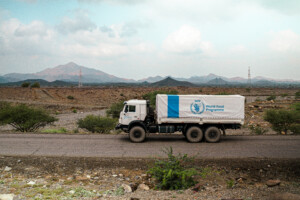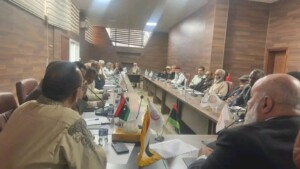Sudan OCHA bulletin 34: Spike in acute malnutrition in West Darfur
Between January and July this year, the total number of Severe Acute Malnutrition (SAM) cases reported in nutrition centres in West Darfur was 5,525 compared to 4,167 reported within the same period in 2015.
Between January and July this year, the total number of Severe Acute Malnutrition (SAM) cases reported in nutrition centres in West Darfur was 5,525 compared to 4,167 reported within the same period in 2015.
The number of admissions in June and July is almost 50 percent higher than in the same period last year, the UN Office for the Coordination of Humanitarian Affairs (OCHA) reports in its latest weekly bulletin.
Experts of the West Darfur Ministry of Health, however, indicate that malnutrition rates in West Darfur are likely to be higher, given the fact that the reported cases do not represent the overall picture, mainly because of a lack of nutrition centres in some areas.
Nutrition experts indicate that it is still unclear what is causing the high rates of malnutrition since no comprehensive assessment has been completed. To respond to the increase in admission rates, Unicef and the World Food Programme (WFP) have dispatched more nutrition supplies and supplements to West Darfur.
The Health Ministry and partners plan to conduct a house-to-house a Mass Mid-Upper Arm Circumference (MUAC) screening in all localities to understand the overall picture of malnutrition in West Darfur. The exercise is to start on 29 August as part of the countrywide screening campaign slated from 29 to 31 August.

Increase in SAM admission cases in Blue Nile State
There has also been an increase in reported SAM cases in Blue Nile State. Sudan’s Food Security Technical Secretariat reported in its July update for Blue Nile State that SAM admission cases among children under five years had increased by 105 percent in June, compared to cases reported in May this year.
According to nutrition experts, the increase in the number of admissions in June was partly due to better detection of cases as a result of the mass MUAC screening completed in the state covering 45 communities.
Over 200,000 people estimated to have been affected by floods
According to the Sudanese government and partners, heavy rainfall and flooding since early June have affected an estimated 204,000 people. The most affected states are North and South Darfur, West Kordofan, El Gezira, Kassala, Sennar, qnd El Gedaref.
The UN and partners continue to provide relief assistance and basic services to flood-affected people. According to the UN Refugee Agency (UNHCR) and partners, 9,154 flood-affected families (estimated 45,770 people) have received essential household supplies. Unicef has provided 4,800 children under five years old with fortified rations to stave off malnutrition, and has continued to screen children, and provide treatment for SAM.
Unicef is also providing communities with ‘school in a box’ learning materials for teachers and students, plastic sheets and sitting mats so that children can continue learning.
Unicef is providing clean drinking water to almost 20,000 people in 11 locations across Kassala State. An estimated 6,500 children in Kassala are unable to attend school because of partial or complete destruction of their schools as a result of rain and flooding, according to Unicef.
Flooding is also affecting displaced communities in Darfur. In South Darfur, the World Health Organization (WHO) provided Rapid Response Kits, conducted vector control activities, and provided training to health sectors partners in Kalma, Otash and Kass camps for the displaced.
Relocation of South Sudanese refugees Kario camp starts in East Darfur
On 20 August, the first group of 105 South Sudanese refugees was relocated from the Khor Omer camp for the displaced in Ed Daein, capital of East Darfur, to Kario, a newly established camp in Bahr El Arab locality (45 km south of Ed Daein). Kario camp will accommodate about 30,000 of these new arrivals, easing the pressure on the basic services in Khor Omer camp.
The families to be relocated to Kario have received full essential household kits from UNHCR. WFP completed a general food distribution on 20 August. Borehole drilling is planned but has not started yet. A mobile health clinic will soon be functioning.
As of 16 August, about 90,000 South Sudanese have sought refuge and assistance in Sudan since the beginning of the year, according to UNHCR. This brings the total number of South Sudanese refugees who arrived in Sudan to about 243,000 since December 2013. Sudan’s requirements for the 2016 South Sudan Regional Refugee Response Plan –revised in June 2016 to reflect the new large-scale influx– are only 11.6 percent funded.
World Humanitarian Day in Sudan
On 17 August, Marta Ruedas, UN Resident and Humanitarian Coordinator for Sudan, paid tribute to the aid workers who provide humanitarian assistance to those in need in Sudan. Speaking at a press conference in Khartoum to mark World Humanitarian Day, Ruedas also highlighted the humanity of the Sudanese people. "Humanitarian work is not only carried out by those who work for national or international aid organisations. It is the ordinary Sudanese people themselves and the local communities who often provide shelter, food and protection to thousands of their fellow men and women who are forced to flee their homes," she said.
According to the Aid Workers Security Database, from 2003 to 2016, 422 national and international aid workers have been subjected to violence and various security incidents in Sudan. This includes 99 staff killed (93 national and 6 international), 202 workers injured (188 national and 14 international) and 121 aid personnel abducted (98 national and 23 international).
In Sudan, 4.6 million people are targeted by UN and its partners for assistance under the 2016 Humanitarian Response Plan (HRP). This includes nearly 700,000 refugees and asylum seekers, in addition to 90,000 South Sudanese refugees who have arrived in Sudan since the beginning of the year. In collaboration with national partners, last year 3.3 million people across Sudan received humanitarian assistance, including food, shelter, clean water, healthcare and education. This assistance was delivered by more than 8,000 aid workers, over 98 percent of whom are Sudanese.
OCHA reports that to meet humanitarian needs in Sudan, and thanks to generous donor contributions, the UN and partners have contributed almost $11 billion since 2003, including more than $600 million in 2015, and about $250 million this year.











 and then
and then